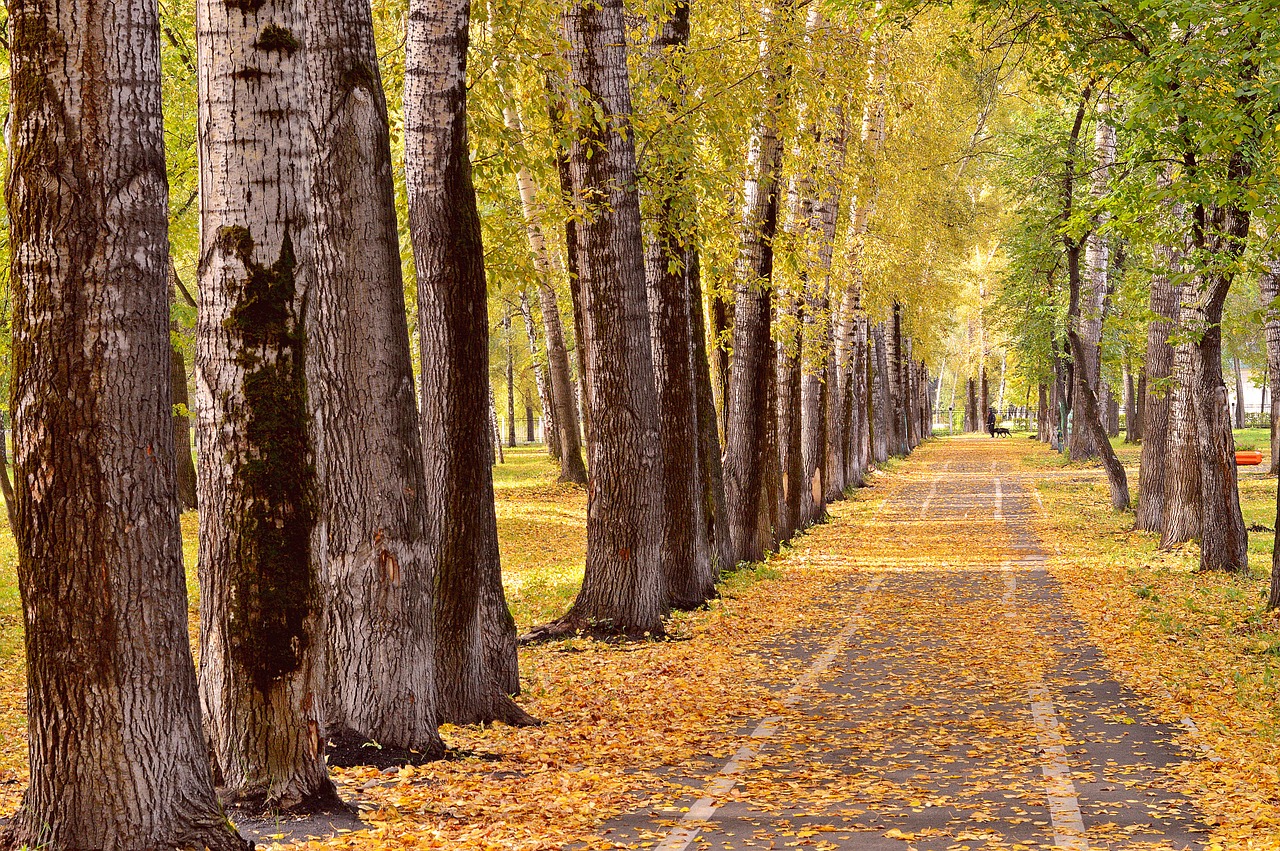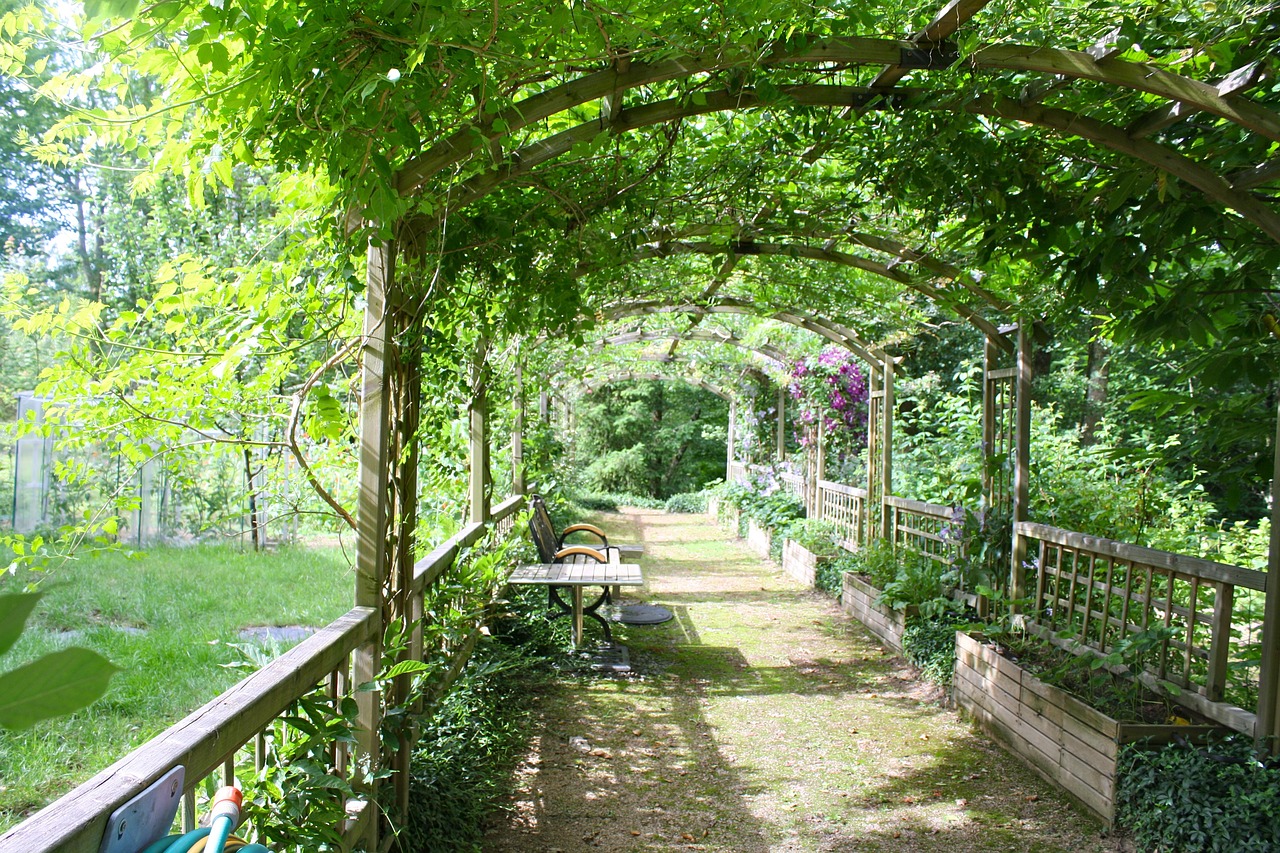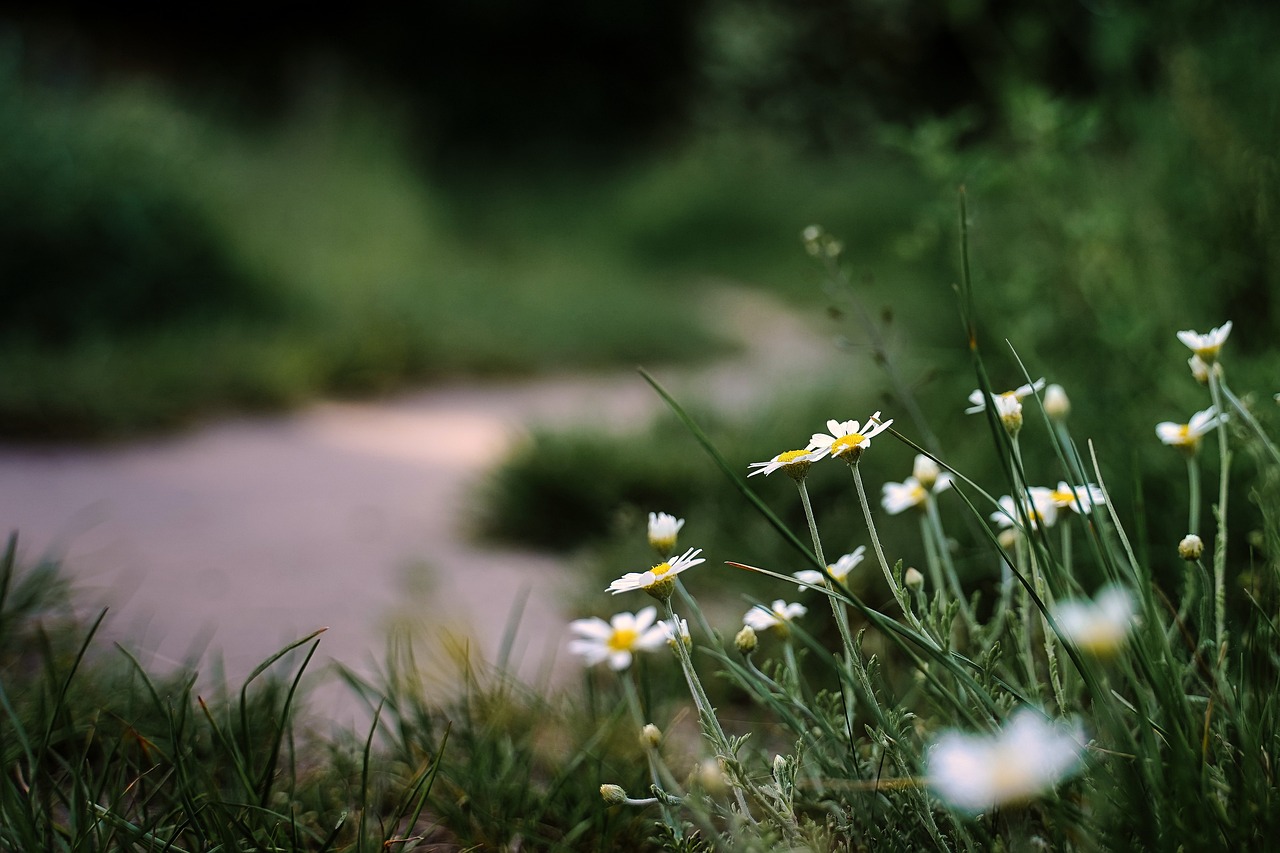Creating a Garden Path: Practical Tips
Creating a garden path is not just about laying down stones or gravel; it's about transforming your outdoor space into a personal sanctuary that reflects your style and meets your needs. Imagine stepping out into your garden and being greeted by a beautiful, well-designed path that invites you to explore every nook and cranny of your greenery. A well-constructed path enhances not only the aesthetic appeal of your garden but also its functionality. With the right materials, thoughtful design, and attention to detail, you can create a garden path that serves as a stunning focal point while guiding visitors through your outdoor paradise.
Before you dive into the construction process, take a moment to envision how you want your garden path to look and feel. Will it be a winding route that meanders through flower beds and shrubs, or a straight path that leads directly to a cozy seating area? The choices you make will set the tone for your entire garden. In this article, we will explore practical tips for selecting materials, designing your path layout, planning for drainage, and incorporating edging and borders. Let's embark on this journey to create a garden path that not only beautifies your space but also enhances your gardening experience!
When it comes to selecting materials for your garden path, the options are as diverse as the flowers in your garden. The right choice can significantly impact both the durability and design of your path. You might want to consider materials like stone, brick, and gravel, each offering unique benefits. For instance, stone provides a natural look that blends seamlessly with your surroundings, while brick can add a touch of elegance and structure. Gravel, on the other hand, is an economical choice that allows for excellent drainage. Think about the overall style of your garden and how each material will complement it.
Here’s a quick comparison of popular materials:
| Material | Durability | Cost | Maintenance |
|---|---|---|---|
| Stone | High | Medium-High | Low |
| Brick | Medium-High | Medium | Medium |
| Gravel | Medium | Low | High |
The layout of your garden path is crucial for both its functionality and visual appeal. A well-thought-out design can create an inviting atmosphere while ensuring that the path is practical for everyday use. Consider the flow of your garden – how do you want people to navigate through it? A path that leads visitors through various plants and features can create a sense of discovery. Use curves and angles to add interest, but ensure that the path remains easy to follow.
One of the first decisions you'll face is whether to opt for a curved or straight path. Each style has its own set of advantages and can dramatically alter the look of your garden. Curved paths offer a more organic feel, mimicking nature's design and inviting exploration. They can create a sense of surprise as visitors navigate through your garden, revealing hidden gems along the way.
Curved paths can enhance the natural beauty of your garden by following the contours of the landscape. They allow for more creativity in design and can soften the overall look of your outdoor space. Imagine a path that winds through a lush garden, leading you to a secluded bench surrounded by fragrant flowers. This design not only adds visual interest but also creates a tranquil retreat.
On the flip side, straight paths provide a clean, modern look that can lead the eye toward focal points, such as a stunning tree or a beautiful sculpture. They are often easier to construct and maintain, making them a practical choice for busy gardeners. If you prefer a more structured approach, a straight path might be the perfect fit for your garden.
To define your garden path and add structure, consider incorporating edging and borders. These elements not only enhance the visual appeal but also help to keep your path tidy. You can use a variety of materials for edging, such as wood, stone, or metal, each offering a different aesthetic. A well-defined edge can make your path stand out and guide visitors seamlessly through your garden.
Proper drainage is essential for maintaining the integrity of your garden path. Without it, water can accumulate, leading to erosion and plant damage. To prevent this, think about how your path will interact with the surrounding landscape. Incorporating gentle slopes can facilitate drainage while adding visual interest to your design. Additionally, consider using permeable materials that allow water to pass through, reducing runoff and promoting sustainability.
Creating gentle slopes is a practical way to enhance both functionality and aesthetics in your garden path. A slight incline can guide water away from your path and surrounding plants, ensuring that your garden remains healthy and vibrant. Think of it as a gentle rise, leading you upward to new discoveries in your garden.
Integrating permeable materials into your garden path is an excellent way to improve drainage and promote sustainability. These materials allow water to seep through, reducing runoff and helping to maintain soil moisture. By choosing permeable options, you're not just enhancing your path; you're also contributing to the health of your garden ecosystem.
- What materials are best for a garden path? The best materials depend on your garden style and budget. Stone, brick, and gravel are popular choices.
- How do I maintain my garden path? Regularly remove debris and weeds, and consider resealing materials like brick or stone to protect them from the elements.
- Can I create a garden path on a slope? Yes! Incorporating gentle slopes can enhance drainage and add visual interest to your path.

Choosing the Right Materials
When it comes to creating a stunning garden path, is a pivotal step that can make or break your design. The materials you select will not only affect the durability of your path but also its overall aesthetic appeal. Imagine walking through a garden where the path feels as harmonious with nature as the flowers and trees surrounding it; that’s the magic of thoughtful material selection!
There are several options available, each with its own unique charm and characteristics. Let’s explore some popular materials that can elevate your garden path:
- Stone: Natural stone paths exude elegance and can blend seamlessly with any garden style. Whether you choose flagstone, slate, or cobblestones, the textures and colors can add a distinctive flair to your outdoor space.
- Brick: If you're aiming for a classic look, brick is your go-to material. It provides a timeless appeal and can be arranged in various patterns, allowing you to express your creativity.
- Gravel: For a more rustic and informal vibe, gravel paths are fantastic. They are cost-effective and allow for excellent drainage, which is crucial for maintaining your garden's health.
- Concrete: This is a versatile option that can be molded into various shapes and finishes. Stamped concrete can mimic the look of stone or brick while offering durability and low maintenance.
When selecting your materials, consider not just the look but also the functionality. For instance, if your garden is prone to heavy rainfall, you might want to avoid materials that retain water or become slippery. Durability is also key; you want your path to withstand the test of time, especially if you live in an area with extreme weather conditions.
Furthermore, think about how your chosen materials will interact with the surrounding landscape. A path made of rough, natural stone might beautifully complement a wildflower garden, while sleek concrete could clash with a more traditional floral arrangement. To help you visualize, consider creating a small sample area in your garden with different materials to see how they look together in various lighting conditions.
Ultimately, the best material for your garden path will depend on your personal style, the overall design of your garden, and your budget. So take your time, explore the options, and remember that this path will be a reflection of you and your love for nature.

Designing Your Path Layout
When it comes to designing your garden path, the layout is not just a matter of aesthetics; it's about creating a functional and inviting space that draws you in. The right design can transform your garden from ordinary to extraordinary, guiding visitors through your outdoor sanctuary while highlighting its natural beauty. Think of your path as the spine of your garden, providing structure and flow. So, how do you make sure it stands out while still serving its purpose?
First and foremost, consider the overall flow of your garden. Your path should lead visitors through the space in a way that feels natural. Imagine walking through a lush forest; paths often meander, creating a sense of adventure and exploration. Similarly, in your garden, a well-planned layout can evoke that same feeling. Incorporate gentle curves and turns to invite curiosity and encourage exploration. The more your path twists and turns, the more interesting it becomes, revealing hidden corners and beautiful plants along the way.
However, a straight path can also be appealing, especially in more modern or minimalist gardens. Straight paths provide a clean and organized look, making them perfect for contemporary designs. They can also serve as a direct route to focal points like a stunning statue or a vibrant flower bed. The key is to find a balance that works for your garden's style and your personal taste.
As you map out your layout, think about how you want to incorporate edging and borders. These elements not only define the path but also add a touch of elegance. Whether you choose brick, stone, or even wooden borders, the edging can enhance the overall look of your path, creating a clear distinction between the path and the surrounding garden. For example, a rustic wooden border can complement a cottage garden, while sleek stone edging might suit a modern landscape.
When designing your path layout, also consider the materials you’ll use. Each material brings its own character and can affect the overall feel of the space. For instance, gravel can create a more casual, relaxed atmosphere, while pavers or bricks can lend a more formal touch. Think about how each material interacts with your garden's plants and flowers, and choose options that harmonize with the natural surroundings.
Lastly, don’t forget about the practical aspects of your path. Make sure it’s wide enough to accommodate foot traffic, especially if you envision hosting gatherings or family events in your garden. A path that’s too narrow can feel cramped and uninviting. A width of at least 3 feet is generally recommended for comfortable walking. Also, consider the slope and elevation changes in your garden. Gentle slopes are not only visually appealing but also help with drainage, preventing water from pooling on your path.
In summary, designing your garden path layout is a blend of art and practicality. By considering the flow, materials, and functionality, you can create a path that not only enhances your garden’s beauty but also invites exploration. So grab your sketchbook, let your imagination run wild, and start planning a path that reflects your unique style and complements your outdoor space!

Curved vs. Straight Paths
When it comes to designing your garden path, one of the most significant decisions you'll face is choosing between curved and straight paths. Each style has its unique charm and functionality, and understanding their differences can help you create a path that not only enhances your garden's beauty but also serves its purpose. So, what exactly are the pros and cons of each design? Let’s dive in!
Curved paths are often celebrated for their organic feel, seamlessly blending into the natural landscape. Imagine walking through a garden where the path meanders like a gentle stream, inviting you to explore every nook and cranny. This style can create a sense of discovery, as each turn reveals new plants, flowers, or garden features. Curved paths can also soften the overall look of your garden, making it feel more inviting and less rigid. However, they may require more planning and can sometimes be less efficient in terms of space, especially in smaller gardens.
On the flip side, straight paths offer a clean, modern aesthetic that directs the eye toward focal points in your garden, such as a beautiful statue or a vibrant flower bed. They can be incredibly functional, providing a direct route from point A to point B without unnecessary detours. This style is particularly advantageous in larger gardens where accessibility is key. However, straight paths may lack the charm and surprise that curved paths offer, potentially making the garden feel more structured and less whimsical.
To help you weigh your options, here’s a quick comparison:
| Feature | Curved Paths | Straight Paths |
|---|---|---|
| Visual Appeal | Organic, inviting | Clean, modern |
| Functionality | Can be less efficient | Direct, efficient |
| Maintenance | May require more upkeep | Generally easier to maintain |
| Exploration | Encourages discovery | Less exploratory |
Ultimately, the choice between a curved or straight path depends on your garden's layout, your personal style, and how you envision using the space. If you want to create an inviting atmosphere that encourages exploration, a curved path may be your best bet. However, if you prefer a more structured and functional approach, a straight path could be the way to go. Whichever you choose, make sure it resonates with your garden's overall theme and enhances the beauty of your outdoor space.
- What is the best material for a garden path? The best material depends on your garden's style and budget. Popular options include stone, brick, and gravel.
- How do I ensure my garden path is safe? Make sure to choose materials that provide good traction and consider adding lighting for visibility at night.
- Can I combine curved and straight paths? Absolutely! Mixing both styles can create a dynamic and visually interesting path layout.

Benefits of Curved Paths
When it comes to garden design, the path you choose can make a world of difference, and curved paths are often the secret ingredient that elevates a garden from ordinary to extraordinary. Imagine strolling through your garden, where each bend invites you to discover something new—a hidden flower bed, a charming seating area, or perhaps a whimsical sculpture. Curved paths create a sense of exploration and surprise, drawing visitors in and encouraging them to wander. Unlike straight paths, which can feel rigid and predictable, curved paths mimic the natural flow of the landscape, making them an appealing choice for many gardeners.
One of the most significant advantages of a curved path is its ability to create a more organic feel in your outdoor space. Nature rarely follows a straight line, so why should your garden? By incorporating curves, you can enhance the natural beauty of your surroundings, allowing your path to blend seamlessly with the flora and fauna. This design choice not only adds visual interest but also encourages wildlife to feel more at home, as the gentle curves can provide shelter and pathways for small creatures.
Moreover, curved paths can help to define different areas of your garden. For instance, a winding path can lead visitors through various sections, such as a vegetable garden, a flower patch, or a serene pond. This zoning effect adds structure while maintaining a sense of flow, allowing each area to shine on its own while contributing to the overall harmony of the garden. Additionally, curves can soften the hard lines of fences and walls, creating a more inviting atmosphere.
Another benefit of curved paths is their ability to enhance visual depth. As you walk along a curved path, your perspective changes, revealing different views and angles of your garden. This dynamic experience can make even a small garden feel larger and more expansive. By strategically placing plants and features along the path, you can create focal points that draw the eye and encourage further exploration.
To sum it all up, here are some key benefits of incorporating curved paths into your garden design:
- Encourages exploration: Curved paths invite visitors to wander and discover new areas.
- Enhances organic beauty: They mimic natural landscapes, creating a more harmonious feel.
- Defines garden zones: Curves can help separate different areas while maintaining flow.
- Creates visual depth: Changing perspectives along the path reveal new views and focal points.
In conclusion, if you're looking to add a touch of magic to your garden, consider the enchanting benefits of curved paths. They not only enhance the aesthetic appeal but also create a delightful experience for anyone who steps into your outdoor sanctuary. So, why not embrace the curves and let your garden unfold in delightful ways?
Q1: How do I decide the best location for a curved path in my garden?
A1: Start by observing the natural flow of your garden. Consider where you want to guide visitors and what areas you want to highlight. Mark potential paths with stakes or a garden hose to visualize the curves before committing to a design.
Q2: What materials work best for creating a curved path?
A2: Popular materials for curved paths include stone, brick, and gravel. Each material can be shaped to follow your desired curves, providing both functionality and aesthetic appeal.
Q3: Are curved paths more difficult to maintain than straight paths?
A3: While curved paths may require a bit more planning during installation, maintenance is generally similar. Ensure proper edging and drainage to keep your path looking great and prevent overgrowth.

Advantages of Straight Paths
Straight paths offer a multitude of benefits that can significantly enhance both the functionality and aesthetic appeal of your garden. First and foremost, they provide a clean and modern look, which can be particularly attractive in contemporary garden designs. Imagine walking down a perfectly straight path, flanked by vibrant flowers and lush greenery, leading you directly to a stunning focal point. This direct line of sight not only draws the eye but also creates a sense of order and symmetry that many gardeners find appealing.
Another key advantage of straight paths is their accessibility. They are typically easier to navigate, making them a practical choice for individuals with mobility issues. By eliminating unnecessary twists and turns, straight paths ensure that everyone can enjoy the beauty of your garden without the risk of stumbling or getting lost. This is especially important if you plan to host gatherings or events in your outdoor space, as a clear path can guide guests seamlessly from one area to another.
Additionally, straight paths can serve as a functional framework for your garden design. They can help to define specific areas, such as a seating space or a flower bed, and can even be used to create visual interest through the use of contrasting materials or colors. For instance, a straight path made of light-colored stones can beautifully contrast with dark, rich soil, creating a striking visual effect. Furthermore, straight paths can be lined with plants or decorative elements, enhancing the overall look and feel of your garden.
Moreover, straight paths are often easier to maintain. With fewer curves and turns, they can be designed to facilitate drainage and prevent water accumulation. This is crucial in maintaining the longevity of your path, as standing water can lead to erosion and damage over time. By ensuring that your straight path is properly graded, you can enjoy a beautiful and functional addition to your garden for years to come.
In summary, the advantages of straight paths are numerous and impactful. They provide a modern aesthetic, improve accessibility, enhance garden structure, and simplify maintenance. If you’re considering a new garden path, think about how a straight design could transform your outdoor space into a beautifully organized and inviting area.
- What materials are best for straight paths?
Common materials include brick, stone, and concrete, all of which offer durability and aesthetic appeal.
- How can I ensure my straight path is level?
Use a level tool during installation and consider adding a slight slope for drainage.
- Can I add plants alongside my straight path?
Absolutely! Lining your path with plants can enhance its beauty and provide a more inviting atmosphere.

Incorporating Edging and Borders
When it comes to creating a stunning garden path, edging and borders are not just an afterthought—they're essential elements that can truly transform the look and feel of your outdoor space. Imagine your garden path as a beautiful ribbon, and the edging as the thread that holds it together. The right edging can not only enhance the visual appeal but also serve practical purposes, such as keeping materials in place and preventing weeds from encroaching into your path. So, what materials should you consider for edging? Here are a few popular options:
- Stone Edging: Natural stone provides a rustic and elegant look. It blends seamlessly with the garden's organic elements and is durable enough to withstand the elements.
- Brick Borders: Bricks can create a classic and structured appearance. They come in various colors and sizes, allowing for customization to match your garden's theme.
- Wood Edging: For a more informal and natural look, wood can be a great choice. It’s easy to install and can be cut to fit any shape, though it may require more maintenance over time.
- Metal Edging: If you’re aiming for a modern aesthetic, consider using metal. It’s sleek, durable, and can provide a sharp contrast to the greenery of your garden.
Each of these materials offers unique benefits, and the choice ultimately depends on your garden's style and your personal preference. For instance, if you want to create a formal garden, brick or stone might be the way to go. On the other hand, if your garden has a more relaxed vibe, wood edging could complement it beautifully.
Moreover, the way you incorporate these borders can also create different effects. For example, raised borders can help define your path and add a tiered look, while flush borders can create a seamless transition between your path and the surrounding garden. Don't forget to consider the height of your edging; taller edging can be visually striking, while lower edging offers a more subtle definition.
To ensure your garden path remains tidy and well-defined, it’s essential to install edging properly. Here’s a quick overview of the installation process:
| Step | Description |
|---|---|
| 1 | Mark the path layout using stakes and string to visualize the edges. |
| 2 | Dig a trench along the marked line, ensuring it’s deep enough for the edging material. |
| 3 | Place the edging material into the trench, making sure it’s level and secure. |
| 4 | Fill in around the edges with soil or gravel to hold it in place. |
| 5 | Finish by compacting the soil and adding mulch or decorative stones if desired. |
By paying attention to the details of your edging and borders, you can create a garden path that not only serves its purpose but also enhances the overall beauty of your outdoor space. Remember, the path you choose is a reflection of your style, so let your creativity shine!
Q: What is the best material for garden path edging?
A: It depends on your garden's style! For a rustic look, natural stone is great, while bricks offer a classic feel. Wood is suitable for informal gardens, and metal can give a modern touch.
Q: How do I maintain my garden path edging?
A: Regularly check for any overgrowth of weeds and trim them back. Depending on the material, you may need to replace wood edging every few years or clean metal edging to prevent rust.
Q: Can I install edging myself?
A: Absolutely! With some basic tools and a bit of effort, you can install edging yourself. Just follow the steps outlined above for a successful installation.

Planning for Drainage
When it comes to creating a stunning garden path, one aspect that often gets overlooked is drainage. You might be thinking, "Why should I care about drainage?" Well, imagine stepping out onto your beautifully designed path only to find it flooded after a heavy rain. Not only does standing water ruin the aesthetics, but it can also lead to erosion and damage surrounding plants. So, let’s dive into some practical strategies for ensuring that your garden path remains both functional and visually appealing, no matter the weather.
First and foremost, proper drainage is about understanding the landscape of your garden. Is it flat, or does it have slopes? If your garden is relatively flat, you may need to create a slight slope in your path to guide water away from your plants and towards natural drainage areas. A slope of about 2% is generally sufficient to encourage water runoff without being too steep for comfortable walking. Think of it as creating a gentle slide for rainwater to flow down, ensuring it doesn’t pool on your lovely stones or bricks.
Now, let’s talk about the materials you choose for your path. Incorporating permeable materials can significantly enhance your drainage strategy. These materials allow water to seep through, reducing runoff and promoting groundwater recharge. Some popular permeable options include:
- Gravel: A classic choice that not only looks great but also allows water to filter through easily.
- Permeable pavers: These come in various designs and can be a stylish way to maintain drainage.
- Natural stone: Certain types of stone can be arranged to create gaps for water to escape.
In addition to selecting the right materials, consider the layout of your path. Incorporating gentle curves can help direct water flow, making it easier for rain to drain away from your plants. You can think of your path as a stream, meandering through your garden, guiding water to where it needs to go. It’s not just about aesthetics; it’s about creating a functional ecosystem.
Another effective technique is to install drainage channels or French drains along the edges of your path. These systems can help collect and redirect excess water, preventing it from accumulating on your path or in your garden beds. If you're unsure where to start, consider consulting with a landscape professional who can assess your property and recommend the best drainage solutions tailored to your unique space.
Lastly, don’t forget about maintenance. Regularly checking your path for debris and ensuring that drainage channels are clear will go a long way in preventing water buildup. Think of it as giving your garden path a little TLC to keep it looking its best and functioning properly.
Q1: How can I tell if my garden path has drainage issues?
A1: Look for signs of standing water or erosion along the path. If you notice puddles forming after rain, it’s a clear indication that your drainage needs attention.
Q2: What are the best materials for a garden path in a rainy climate?
A2: Consider using permeable materials like gravel or permeable pavers, which allow water to drain through rather than pooling on the surface.
Q3: Can I modify my existing path to improve drainage?
A3: Yes! You can add slopes, install drainage channels, or replace some materials with permeable options to enhance drainage without having to completely rebuild your path.

Sloping Techniques
When it comes to creating a garden path that not only looks stunning but also functions well, incorporating slopes is a game-changer. You might be wondering, "Why should I bother with slopes?" Well, the answer lies in the magic of drainage. Properly designed slopes can prevent water from pooling on your path, which can lead to erosion and damage over time. Imagine stepping onto your path after a rainstorm and finding it perfectly dry—that's the beauty of effective sloping!
One of the most effective techniques for achieving gentle slopes is to create a camber. This means that the center of your path is slightly elevated compared to the edges. This design encourages rainwater to flow off the path and into the surrounding garden beds, rather than collecting in puddles. Not only does this help maintain the integrity of your path, but it also nourishes your plants by directing water where it's needed most.
Another technique to consider is the use of terracing. This involves creating a series of flat areas or steps along the slope, which can add visual interest to your garden path. Terracing is particularly useful in hilly or uneven landscapes. It not only aids in drainage but also creates distinct areas for planting or decoration. Imagine walking along a winding path that showcases beautiful flowers on each terrace—what a delightful experience!
When planning your slopes, it's essential to keep in mind the gradient. A gentle slope of about 1-2% is ideal for most garden paths. This means that for every 100 units of length, the path should drop 1-2 units in height. If the slope is too steep, it can become difficult to walk on and may lead to erosion. Use a simple level or a string line to measure your gradient as you work.
Lastly, consider integrating drainage channels alongside your path. These channels can help direct excess water away from the path and prevent any waterlogging issues. You can create them using small rocks or even decorative drains that blend seamlessly with your garden design. By taking these steps, you'll ensure your garden path remains not only beautiful but also functional for years to come.
- What is the best material for a garden path? It depends on your style and functionality needs. Common options include stone, brick, and gravel.
- How steep should my garden path be? A gentle slope of 1-2% is recommended for optimal drainage without compromising accessibility.
- Can I use permeable materials for my path? Absolutely! Permeable materials allow water to flow through, reducing runoff and promoting sustainability.
- How do I maintain my garden path? Regularly check for weeds, clean debris, and ensure proper drainage to keep your path in good shape.

Using Permeable Materials
When it comes to creating a garden path that not only looks stunning but also functions well, is a game-changer. These materials allow water to seep through rather than pooling on the surface, which is crucial for preventing erosion and maintaining a healthy garden environment. Imagine walking on a path that not only guides you through your garden but also contributes to its well-being by managing water effectively. Sounds ideal, right?
Permeable materials come in various forms, each offering unique benefits and aesthetic qualities. For instance, permeable pavers are a popular choice for many gardeners. They are designed with gaps that allow rainwater to filter through, reducing runoff and promoting groundwater recharge. Additionally, they come in various designs and colors, making it easy to find the perfect match for your garden's style.
Another fantastic option is gravel. Not only is it affordable and easy to install, but it also provides excellent drainage. The spaces between the gravel stones allow water to flow through, preventing puddles from forming. Plus, gravel paths can lend a rustic charm to your garden, creating a warm and inviting atmosphere. However, it’s essential to consider the maintenance aspect, as gravel may need to be replenished over time to maintain its appearance.
For those looking for a more sustainable option, grass pavers can be a wonderful choice. These are typically concrete grids filled with soil and grass, allowing for a green path that blends seamlessly with your lawn. Not only do they provide excellent drainage, but they also support plant growth, making them an eco-friendly alternative. Imagine walking down a path that feels like a natural extension of your lawn—it’s both pleasing to the eye and beneficial for the environment.
Incorporating permeable materials into your garden path design is not just about aesthetics; it’s also about functionality. By choosing materials that promote drainage, you can enhance the longevity of your path and protect surrounding plants from waterlogging. To help you visualize the benefits, here’s a quick comparison of some popular permeable materials:
| Material | Drainage Capability | Aesthetic Appeal | Maintenance Level |
|---|---|---|---|
| Permeable Pavers | Excellent | Varied Designs | Low |
| Gravel | Good | Rustic Charm | Medium |
| Grass Pavers | Very Good | Natural Look | Medium to High |
Ultimately, the choice of permeable materials for your garden path should align with your overall design goals and maintenance preferences. Whether you opt for the sleek look of permeable pavers or the natural feel of grass pavers, you’re making a choice that benefits both your garden and the environment.
- What are permeable materials?
Permeable materials are types of surfaces that allow water to pass through them, reducing runoff and promoting drainage. - Why should I use permeable materials for my garden path?
Using permeable materials helps prevent water accumulation, protects surrounding plants, and enhances the sustainability of your garden. - Are permeable pavers expensive?
The cost can vary, but permeable pavers are often considered a worthwhile investment due to their durability and aesthetic appeal.
Frequently Asked Questions
- What materials are best for a garden path?
Choosing the right materials depends on your garden's style and functionality. Common options include stone, brick, and gravel. Each material offers unique aesthetics and durability, so consider what fits your vision and budget.
- Should I choose a curved or straight path?
This really depends on the vibe you want for your garden! Curved paths create a more natural and inviting feel, encouraging exploration. On the other hand, straight paths offer a clean, modern look that can direct attention to specific focal points. Think about the atmosphere you want to create!
- How can I enhance the visual appeal of my path?
Incorporating edging and borders can significantly enhance your path's look. Materials like wood, stone, or even metal can define your path and keep it tidy. Plus, adding plants or decorative stones alongside the path can make it pop!
- What should I consider for drainage?
Proper drainage is crucial to maintain your garden path's integrity. Design your path with a slight slope to facilitate water runoff and prevent puddles. Using permeable materials can also help water seep through, reducing runoff and protecting your plants.
- How do I create gentle slopes for drainage?
To create gentle slopes, start by marking the high and low points of your path. Gradually build up the higher areas with soil or gravel, ensuring a smooth transition. This not only helps with drainage but also enhances the overall aesthetics of your path.
- Can I use recycled materials for my garden path?
Absolutely! Using recycled materials is a great way to save money and be eco-friendly. Materials like reclaimed bricks, old pavers, or even crushed concrete can add character to your path while being sustainable.



















